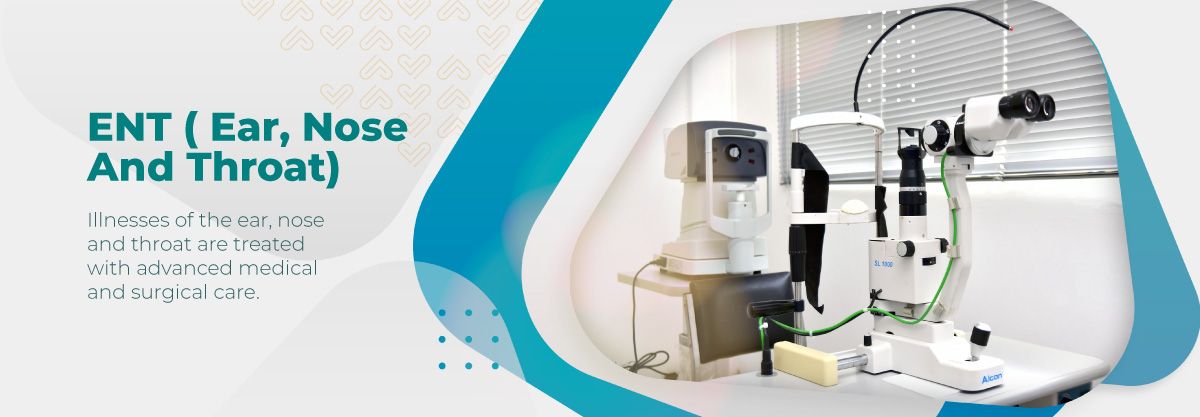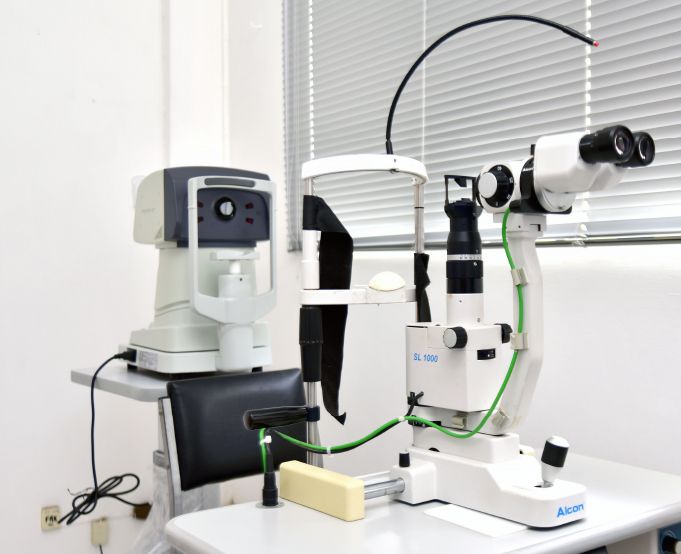Emergency Tel: 211 5157


- Home
- Specialities
- ENT (Ear, Nose And Throat)
ENT (Ear, Nose And Throat)

-
Tonsillectomy
Tonsillectomy is the surgical removal of the tonsils, two oval-shaped pads of tissue at the back of the throat - one tonsil on each side.
A tonsillectomy was once a common procedure to treat infection and inflammation of the tonsils (tonsillitis). Today, a tonsillectomy is usually performed for sleep-disordered breathing but may still be a treatment when tonsillitis occurs frequently or doesn't respond to other treatments.
A tonsillectomy may also be necessary to treat breathing and other problems related to enlarged tonsils and to treat rare diseases of the tonsils.
Recovery time for a tonsillectomy is usually at least 10 days to two weeks.
Why it's done
A tonsillectomy is used to treat:- Recurring, chronic or severe tonsillitis
- Complications of enlarged tonsils
- Bleeding of the tonsils
- Other rare diseases of the tonsils
A tonsillectomy may be recommended to prevent frequent, recurring episodes of tonsillitis. Frequent tonsillitis is generally defined as:
- At least seven episodes in the preceding year
- At least five episodes a year in the past two years
- At least three episodes a year in the past three years
The procedure may also be recommended if:
- A bacterial infection causing tonsillitis doesn't improve with antibiotic treatment
- An infection that results in a collection of pus behind a tonsil (tonsillar abscess) doesn't improve with drug treatment or a drainage procedure
A tonsillectomy may also be used to treat other rare diseases or conditions of the tonsils, such as:
- Cancerous tissue (malignancy) in one or both tonsils or suspected malignancy
- Recurrent bleeding from blood vessels near the surface of the tonsils
- Severe bad breath (halitosis) related to debris in the crevices of tonsils.
-
Septoplasty
Septoplasty is a surgical procedure to straighten the bone and cartilage dividing the space between your two nostrils (septum). When the septum is crooked, it's known as a deviated septum. A deviated septum can make it harder to breathe through your nose and can increase the risk of sinus infections due to poor drainage.
During septoplasty, your nasal septum is repositioned to the middle of your nose. This may require your surgeon to cut and remove parts of your nasal septum before reinserting them in the proper position.
Why it's done
A crooked septum is common. But when it's severe, a deviated septum can block one side of your nose and reduce airflow, causing difficulty breathing through one or both sides of your nose.
Septoplasty straightens the nasal septum by trimming, repositioning and replacing cartilage, bone or both.
If you experience symptoms — such as difficulty breathing through your nose — that affect your quality of life, you may consider surgery to fix a deviated septum. -
Myringotomy (Ear tubes aka Tympanostomy tubes)
Ear tubes are tiny, hollow cylinders that are surgically inserted into the eardrum. This opening enables drainage of the middle ear, allows air to flow into the middle ear and prevents the buildup of fluids behind the eardrum. An ear tube is usually made of metal or plastic.
Ear tubes are also called tympanostomy tubes, ventilation tubes, myringotomy tubes or pressure equalisation tubes.
Ear tubes are often recommended for children who have persistent fluid buildup behind the eardrum, especially if the condition causes hearing loss or affects speech development. Your child's doctor may also recommend ear tubes if your child gets frequent ear infections.
Most ear tubes fall out within four to 18 months, and the holes heal shut on their own. Some tubes need to be removed, and some holes may need to be surgically closed. -
Tracheostomy
Tracheostomy is a hole that surgeons make through the front of the neck and into the windpipe (trachea). A tracheostomy tube is placed into the hole to keep it open for breathing. The term for the surgical procedure to create this opening is tracheotomy.
Why it's done
Situations that may call for a tracheostomy include:- Medical conditions that make it necessary to use a breathing machine (ventilator) for an extended period, usually more than one or two weeks
- Medical conditions that block or narrow your airway, such as vocal cord paralysis or throat cancer
- Paralysis, neurological problems or other conditions that make it difficult to cough up secretions from your throat and require direct suctioning of the windpipe (trachea) to clear your airway
- Preparation for major head or neck surgery to assist breathing during recovery
- Severe trauma to the head or neck that obstructs breathing
- Other emergency situations when breathing is obstructed and emergency personnel can't put a breathing tube through your mouth and into your trachea
-
Ear reconstruction
Ear reconstruction is surgery to repair or rebuild the external part of the ear, called the auricle or pinna. This surgery may be done to correct an irregularity of the outer ear that is present at birth (congenital defect). Or it may be used to restore an ear affected by cancer surgery or damaged by trauma, such as a burn.
Several surgical approaches are available for ear reconstruction. Cartilage taken from the ribs can be used to make a framework for the ear, or a medical implant may be used instead. In some cases, an artificial (prosthetic) outer ear anchored in bone may be an option.
For children who need ear reconstruction for a condition present at birth, the surgery often is done between the ages of 6 and 10, although it may be possible at earlier ages in some cases.
Why it's done
Ear reconstruction typically is done to treat the following conditions that affect the outer part of the ear:- Underdeveloped ear (microtia)
- Missing ear (anotia)
- Part of an ear is buried under the skin on the side of the head (cryptotia)
- An ear is pointed and has extra folds of skin (Stahl's ear)
- An ear is folded over itself (constricted ear)
- Part of an ear was removed or damaged as a result of cancer treatment
- A burn or other traumatic damage to an ear
Ear reconstruction only involves the outer part of the ear. It does not change the ability to hear. Surgery to correct hearing problems may be planned along with this surgery in some cases.
-
Obstructive Sleep Apnea
Obstructive sleep apnea is the most common sleep-related breathing disorder. It causes you to repeatedly stop and start breathing while you sleep.
This type of apnea occurs when the throat muscles intermittently relax and block the airway during sleep. A noticeable sign of obstructive sleep apnea is snoring.
Treatments for obstructive sleep apnea are available. One treatment involves using a device that uses positive pressure to keep your airway open while you sleep. Another option is a mouthpiece to thrust the lower jaw forward during sleep. In some cases, surgery might be an option.
Signs and symptoms:
- Excessive daytime sleepiness
- Loud snoring
- Observed episodes of stopped breathing during sleep
- Abrupt awakenings accompanied by gasping or choking
- Awakening with a dry mouth or sore throat
- Morning headache
- Difficulty concentrating during the day
- Mood changes, such as depression or irritability
- High blood pressure
-
Salivary Gland Tumors
Salivary glands make saliva, which aids in digestion, keeps the mouth moist and supports healthy teeth. Salivary gland tumors are growths of abnormal cells (tumors) that begin in the salivary glands.
Salivary gland tumors can begin in any of your salivary glands. Most are noncancerous (benign), but sometimes they can be cancerous. Most salivary gland tumors occur in the parotid glands.
Treatment for salivary gland tumors is usually with surgery to remove the tumor. People with salivary gland cancers may need additional treatments. -
Temporomandibular Joint Disorders (TMJ)
The temporomandibular joint (TMJ) acts like a sliding hinge, connecting the jawbone to the skull. You have one joint on each side of your jaw.
In most cases, the pain and discomfort associated with TMJ disorders is temporary and can be relieved with self-managed care or nonsurgical treatments. Surgery is typically a last resort after conservative measures have failed, but some people with TMJ disorders may benefit from surgical treatments.
Symptoms:
- Pain or tenderness of your jaw
- Pain in one or both of the temporomandibular joints
- Aching pain in and around your ear
- Difficulty chewing or pain while chewing
- Aching facial pain
- Locking of the joint, making it difficult to open or close your mouth
TMJ disorders can also cause a clicking sound or grating sensation when you open your mouth or chew. But if there's no pain or limitation of movement associated with your jaw clicking, you probably don't need treatment for a TMJ disorder.
Doctor Schedule
Doctors scheduled for the week.
| Monday & Wednesday | 11hr - 13hr | Dr Dawood Oaris |
| Monday & Wednesday | 11hr - 13hr | Dr Ragavoodoo Seetana |
| Monday & Wednesday | 11hr - 13hr | Mrs Suroop Vandana |
| Monday & Wednesday | 11hr - 13hr | Dr Dinassing |
| Monday & Wednesday | 11hr - 13hr | Dr Abelak |
Doctors and Specialists of ENT (Ear, Nose And Throat)
Contact Us
-

4, Labourdonnais Street,
Port-Louis -

(230) 211 5157
(230) 211 5181
(230) 211 7559 -

(230) 211 4647
Follow Chisty Shifa Clinic
Patients
Publications
Terms & Conditions | Privacy Policy | COPYRIGHT © 2022 Chisty Shifa.
All rights reserved. Powered by Nova Interaction



